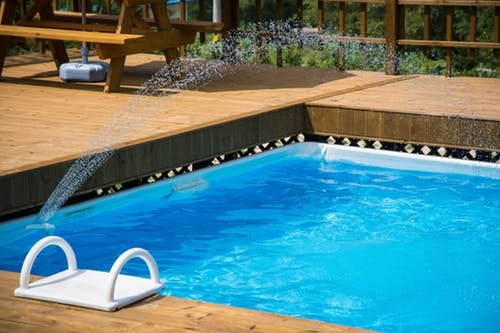Table of Contents Show
If your pool is starting to age, it might be time to think about resurfacing it. A pool may have discoloration, blisters or cracks that resurfacing can effectively eliminate. Based on the current surfacing your pool has and what you prefer to put on it, this can be a simple or major project. There are various things you need to consider when determining different ways to resurface your pool.

Resurfacing – Keeping your Pool in Great Condition and Preventing Leaks
Swimming pools are often great sources of exercise and fun for everyone for many years but a pool requires maintenance to keep it looking great as well as to prevent leaks. When the surface of a pool begins to peal or chip, it is time to plan for resurfacing.
Read Also:
Professional vs. DIY Resurfacing
Pool refinishing or resurfacing can sound overwhelming but it really does not need to be. Costs associated with resurfacing a pool vary since each pool is different. These costs typically depend on the type of finish used and the size of the pool. While some sites may suggest that you can handle this type of project yourself, it can be extremely challenging if you have not resurfaced a swimming pool before.
Dealing with mistakes that result from inexperience can end up costing you much more in the long run than hiring a professional right from the start. This is why a professional refinisher is highly recommended for the best results.
Products
- The key to effective pool resurfacing is to ensure that that you hire an experienced and skilled contractor who is well versed with pool finishes. It is important to avoid working with any company that does not have experience with the products it installs.
- When looking for pool contractors, it is always a good idea to ask about the products they use as well as the amount of experience they have with different products.
Preparation
Another key factor that sets professionals apart is the preparation that is done at the beginning of all projects. Prep work must always be carried out well for long lasting results. This usually involves draining the pool, doing an acid wash and applying a bonding coat.
The coat is essential because it enables the new surface to stick on to the pool, which is comparable to the coat of primer for vehicles. Some companies may attempt to reduce costs by avoiding the bond coat. However, this can lead to the new surface peeling and drastically reducing the life of the new finish of your pool.
Pool Plaster
Pool plaster is a widely used pool finish material. This typically consists of cement that is mixed with limestone or marble sand. The fairly durable mixture gives the pool the hardness it needs along with the smoothness that is expected from a pool. As an affordable pool resurfacing option, pool plaster can function for a number of years.
Pebble Finish
Pebble finish and pool plaster are similar with the main difference being that the sand and cement mix also contains pebbles. This addition makes the finish more durable and can last for many more years.
Quartz Finish
Quartz finish uses quartz zone rather than pebbles. And quartz offers more color and its durability can be enjoyed for several years.
Fiberglass
Fiberglass is suitable for fiberglass swimming pools. Coating the resin with special gels provides a sturdy and shiny finish for the pool.









